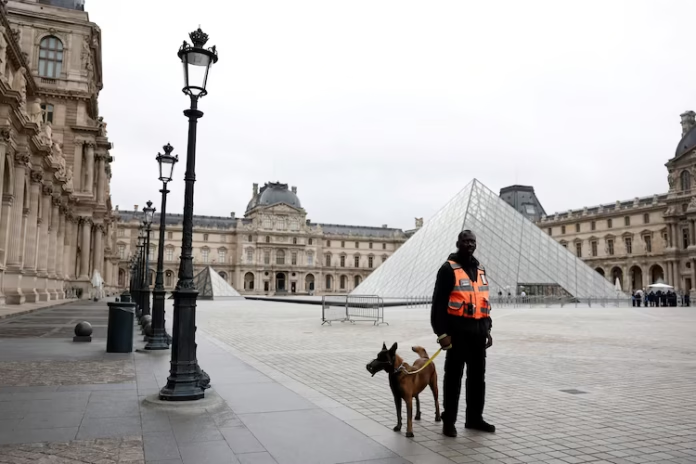
The Louvre reopened its doors Friday morning for the first time since what French media are calling “the heist of the century” — a daring daylight robbery that saw artworks and jewels worth an estimated €88 million vanish from the world’s most visited museum.
Security personnel stood guard at every entrance as visitors cautiously trickled back into the sprawling Paris landmark. For many, the reopening was symbolic — a reclaiming of normalcy after a theft that has reignited national debate over how France protects its cultural treasures.
Speaking before a French Senate oversight panel, Louvre president Claire Dufresne described the incident as a “systemic failure,” adding that the institution was reviewing “every protocol, every checkpoint.”
She confirmed that the robbers entered through a maintenance corridor and made their escape via a side window now hastily shuttered. “The Louvre’s image, like its glass pyramid, has been fractured,” she said.
Police sources told Le Monde that the theft was carried out with “military precision.” Investigators believe the suspects used insider knowledge to disable motion sensors and timed their escape with a scheduled security shift change. So far, no arrests have been made, though international warrants are expected.
Beyond the crime itself, the episode has touched a national nerve. France’s cultural institutions — long symbols of pride and continuity — are increasingly strained by budget cuts and the crush of overtourism. The Louvre alone welcomes nearly 10 million visitors a year, a figure that complicates crowd management and surveillance.
“This is not just about a break-in; it’s about broken systems,” said cultural historian Philippe Lenoir. “The Louvre is an 800-year-old fortress trying to function in a 21st-century world of mass tourism and austerity.”
President Emmanuel Macron has yet to comment directly on the heist but faces mounting pressure from lawmakers demanding an inquiry into museum funding and national heritage protection. The outrage comes amid broader public frustration with political elites and a sense that state institutions are failing to deliver basic accountability.
The echoes of the 2019 Notre Dame fire are hard to ignore. Then, as now, questions were raised about maintenance, safety, and the stewardship of France’s cultural icons. For many Parisians, the Louvre’s ordeal feels like another blow to a nation’s pride already weathered by crises — from inflation to social unrest.
As visitors queued once more beneath the iconic glass pyramid, a quiet unease lingered. “We come to see beauty and history,” said Marianne Duroy, a teacher from Lyon. “But today, I feel like we’re also seeing what’s missing — not just the stolen jewels, but trust.”
For now, the investigation continues — and so does the uneasy question of whether France’s grandest museum can ever truly be safe again.